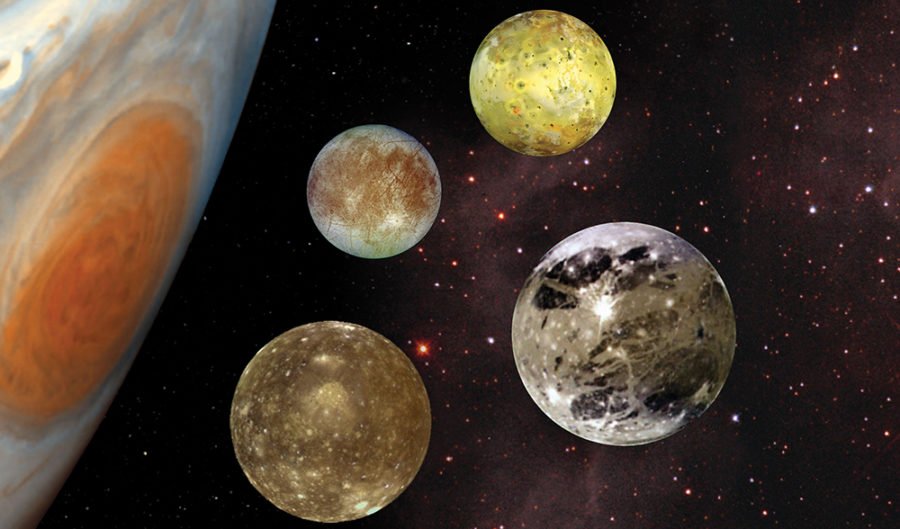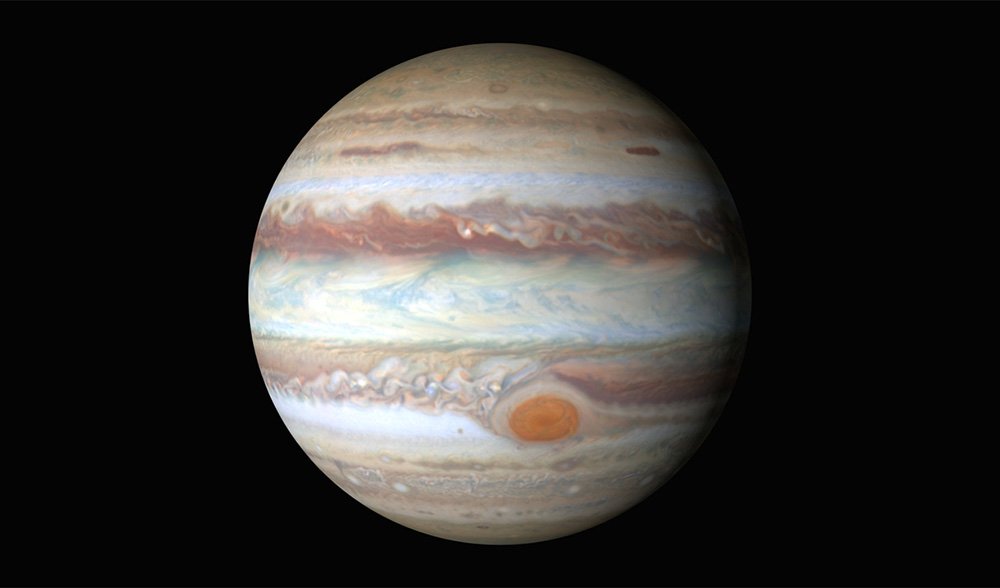Jupiter to put on show of the year

LOOK UP AT the night sky on Tuesday, 8 March and Jupiter – the fifth planet from the Sun and the biggest in our Solar System – will be shining more brilliantly than at any other time of year.
If you have a good pair of binoculars at hand, you’ll be able to easily see the gas giant’s four largest (Galilean) moons sitting in a line either side of the planet.
In astronomy terms, Jupiter will be “at opposition” on this day, meaning it lies opposite the Sun, with the Earth in between.
“This means the gas giant is both at its closest point to the Earth as well as fully illuminated by the Sun from our point of view. These effects together will ensure that Jupiter is looking its best,” explains Dr Alan Duffy, an astronomer at Swinburne University in Melbourne.
“It will also be easily the brightest object in the night sky after Venus sets along with the Sun, so Jupiter should be easy to see rising on the opposite side of the sky from the setting Sun,” he adds.
When to see it
The best time to view the planet – named after the king of the Roman Gods – will be at midnight, when the planet is as high in the night sky as it will reach, meaning we are looking at it through the least amount of atmosphere. (“Moving air can smear out your view – like air shimmering over tarmac on a hot day,” explains Alan. “This is the reason that the stars twinkle.”)
However, anytime from about 1.5 hours after sunset on 8 March will work, Alan adds. “Just have your back to where the Sun has set and Jupiter will be the brightest light in the sky in front of you.”
Jupiter reaches opposition once every year, however this year will be a better opportunity than 2015, as there will be a New Moon, meaning Jupiter won’t be competing with light reflected from the Moon. And while Jupiter’s Galilean moons are always visible with a pair of good binoculars, they’ll be easier than usual to spot on this day.
For an even better show, “get out to your local astronomical society, and with even a modest telescope you can see the Great Red Spot in Jupiter’s atmosphere as well as the banks of clouds in this gas giant,” recommends Alan. The Great Red Spot is a giant, spinning storm in Jupiter’s atmosphere, about three times the size of Earth at its widest point.

Jupiter mapped by Hubble. Source: NASA
Jupiter facts
- At about 143,000km wide at its equator, Jupiter is the biggest planet in our Solar System – so large, that all of the other planets in the Solar System could fit inside it (or more than 1000 Earths).
- Jupiter lies 5.2 astronomical units from the Sun, or a little over five times the distance from Earth to the Sun.
- Jupiter’s atmosphere is made up of mostly hydrogen and helium gas, just like the Sun.
- Jupiter has four rings, mostly made up of tiny dust particles.
- Jupiter spins faster than any other planet. A day on Jupiter is about 10 hours long, while it takes 12 Earth years for Jupiter to make one rotation around the Sun.
- Jupiter has at least 67 known moons. The four largest moons, Io, Europa, Ganymede and Callisto, were discovered by Italian astronomer Galileo Galilei in 1610.
- Jupiter’s largest moon, Ganymede is the largest moon in our Solar System. It is larger than the planet Mercury and almost as big as Mars.
RELATED CONTENT
-
Best Aussie astronomy photos
-
The planets are about to align
-
Galaxies: 16 of the universe’s most stunning
-
Timeline of space exploration
-
A short history of the universe

